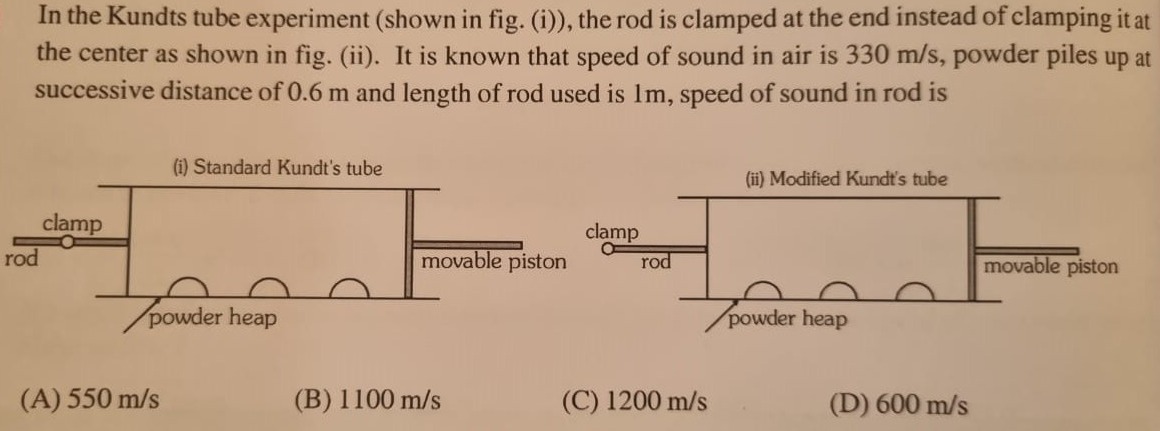Question
Question: In the Kundts tube experiment (shown in fig. (i)), the rod is clamped at the end instead of clamping...
In the Kundts tube experiment (shown in fig. (i)), the rod is clamped at the end instead of clamping it at the center as shown in fig. (ii). It is known that speed of sound in air is 330 m/s, powder piles up at successive distance of 0.6 m and length of rod used is 1m, speed of sound in rod is

550 m/s
1100 m/s
1200 m/s
600 m/s
1100 m/s
Solution
Here's how to determine the speed of sound in the rod:
-
Wavelength in air: The distance between successive powder heaps is half the wavelength of sound in air. Therefore, λair=2×0.6m=1.2m.
-
Frequency of sound in air: Using the formula v=fλ, we find the frequency: f=λairvair=1.2m330m/s=275Hz.
-
Frequency of the rod: The frequency of vibration of the rod is equal to the frequency of the sound in the air, so f=275Hz.
-
Wavelength in the rod: For a rod clamped at one end, the fundamental mode has a wavelength four times the length of the rod: λrod=4×Lrod=4×1m=4m.
-
Speed of sound in the rod: Finally, calculate the speed of sound in the rod: vrod=fλrod=275Hz×4m=1100m/s.
